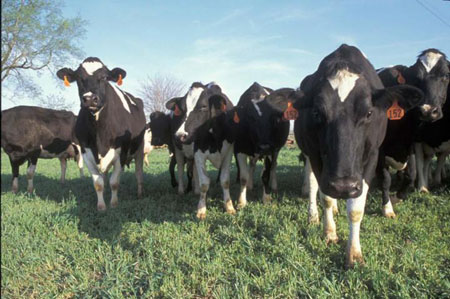



Balancing unique nutrients can help farmers achieve efficient growth in beef cattle
Understanding the impact of specific nutrients on growth rates is at the heart of a new beef rationing approach from Mole Valley Farmers.Precision Nutrition Beef draws on a range of unique nutrients analysed through the Mole Valley Farmer's existing rationing programme. By delving into these nutrients in detail, the aim is to help beef farmers improve performance efficiencies and ultimately, margins, says Nutritionist Dr Matt Witt.
“Feed is 75 percent of a farm’s variable costs. It’s the biggest part of production costs. If you get it wrong, it’s costing you a lot of money,” he says. “At present, beef rationing software is limited as it only looks at total energy supply, rather than how that energy is broken down. We want to establish how that energy is delivered by looking at a number of unique nutrients. By understanding the impact of these key nutrients on growth rates, we can then design diets to match a farm’s specific growth rate targets and reduce the cost per kilo of gain for that farmer.”

Precision Nutrition Beef looks at a number of specific nutrients. Ultimately, optimal animal performance is dependent on the balance between these nutrients. The nutrients include:
- Gluco TN - This looks at the precursors to glucose which an animal uses for energy and growth.
- Rapidly Fermentable Carbohydrates (g/kgDM) - This provides a more detailed look at energy supply.
- Total Fermentable Carbohyrates (g/kgDM) - The combination of fast and slow energy.
- Structural Fibre Index - The amount of physical fibre in the diet.
- Acid Load (g/kgDM) - This is an indication of rumen health.
Analysis of a sample of beef diets has already shown that high Gluco TN levels are positively related to growth rate. At the same time, too much fibre - leading to a high Structural Fibre Index - is negatively related.
The appropriate ration balance will be dictated by individual farm growth rate targets and rumen health. For example, a farmer wanting stock to grow at 1.2kg per day will require a diet with a different balance compared to one aiming for 1.7kg per day.
The Mole Valley Farmers team of beef specialists are currently in the process of validating different diets in order to establish recommendations for minimum and maximum levels for each nutrient. This will involve working with two or three farmers that can measure growth rates to test the relationship between different nutrients and performance.
Matt explains: “We want efficient, lean growth. We need to know where to stop pushing so we don’t waste nutrients and compromise performance. For example, including too much Gluco TN is likely to push acid load too high. Where is that maximum before you don’t see any of the benefits from the extra glucose because you’re causing rumen upset?”
He stresses that it is ultimately about helping beef farmers improve their margins. “It’s about helping reduce the cost of growth. If you understand how much it’s costing you to grow your animals, let the Mole Valley Farmers team help you push that cost down.”


